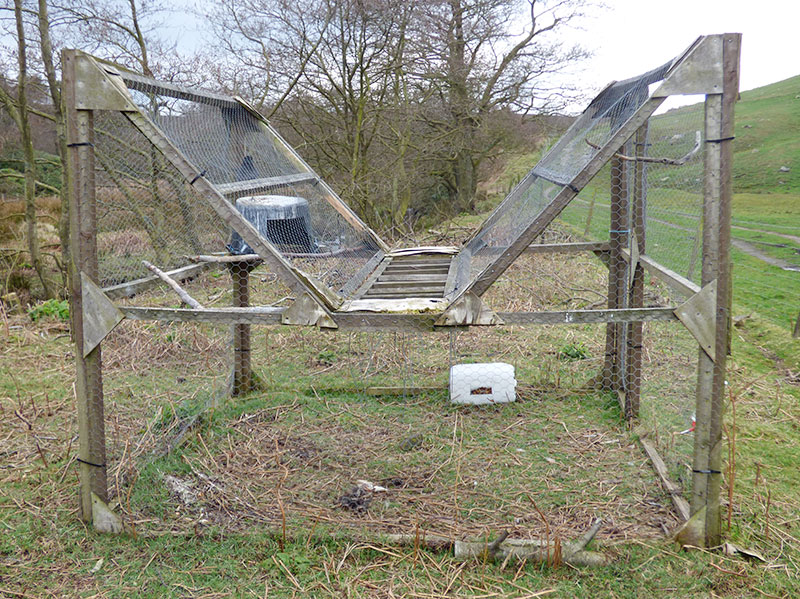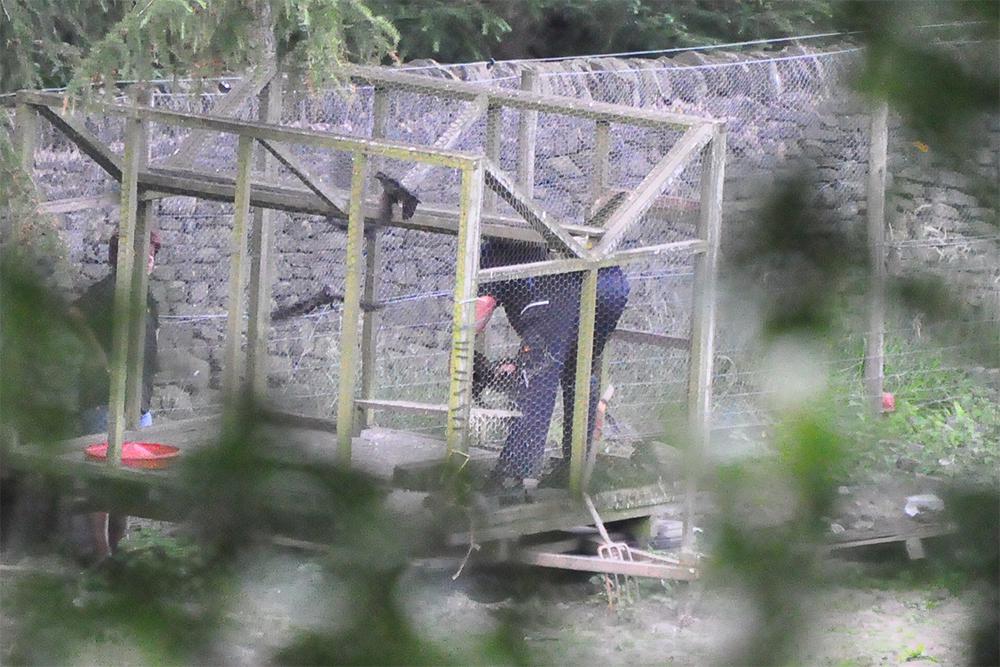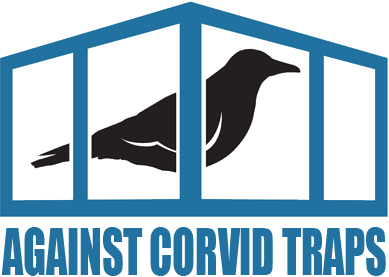Ladder Traps / Multi-Traps
Ladder traps (which are also known as letterbox traps) are much larger than Larsen traps. They are used to capture multiple corvids, typically crows, at once. The bird enter the trap through the ‘ladder’ but is then unable to escape due to the ladder rungs. Ladder traps are almost all used by gamekeepers and can catch birds of prey.

Ladder Traps in the UK
Ladder traps are constructed of a wooden frame with a wire mesh covering and a horizontal ‘ladder’ mid section. Some cheaper variants of the Ladder trap dispense with the ladder section and use a wire mesh top funnel instead.
Typically they are pre-baited, although we’ve witnessed gamekeepers using a live decoy bird. This is confirmed by Solway Feeders, makers of the Solway Ladder Trap, who state, “Ladder traps (which are also known as letterbox traps) can either be pre baited before setting or used like a traditional Larsen Trap with a call bird.”
The live trapping of wild birds is permitted under a General Licence issued by Natural England. The General Licence states that the “Decoy birds must be provided with adequate food, water at all times, appropriate shelter and a suitable perch.” Ladder traps provide no shelter or perch for the decoy bird and are often without food and water.
Ladder Trap Cruelty
Corvids, including crows, magpies, jays and jackdaws, are highly intelligent and adaptable birds. The inherent cruelty associated with Ladder traps raises concerns about the welfare and ethical treatment of these birds.
Unlike more humane methods of managing wildlife, Ladder traps prolong the suffering of captive birds. Their inability to escape from the trap triggers fear and anxiety, leading to extendedd stress and pain. In many cases, birds are left in the trap for long periods without food, water or shelter, adding to their suffering.
The fear of humans exhibited by wild birds comes from their natural survival instincts. Throughout history, birds have encountered predators, including humans. As a result, they have evolved to be wary about potential threats. This innate fear functions as a defense mechanism, allowing birds to recognize potential threats and respond accordingly. When humans get too close, birds see them as a potential threat, triggering a fear response.
This fear is compounded ten fold when a human, whether it be a gamekeeper or farmer, enters the Ladder trap. In nature when wild birds panic, they take to the skies in a rapid flight response. Denied this chance of taking flight, the crows frantic attempts to escape results in collisions with trapped birds, the wooden structures and the wire mesh of the Ladder trap, leading to injuries.

The owner of the Ladder trap will need to enter the trap numerous times to remove and kill the trapped birds. This means the wild birds experience prolonged panic during the process. In cases we’ve documented, trap owners kill the birds in front of the other trapped birds in order to save time, causing even greater distress and fear to the panicking crows.
Ladder Traps in Scotland
Many Multi-traps can be found in Scotland. Scottish law requires corroboration in terms of evidence. If you do find something that you suspect is illegal, try to get a second witness and photographic/video footage of the event. Note the time and a six figure grid reference of the site. For legal and safety reasons, do not touch or interfere with the (alleged) crime scene. Please phone the RSPB (Scotland) on 0131 3116500 or 01767 680 551 (England and Wales).
